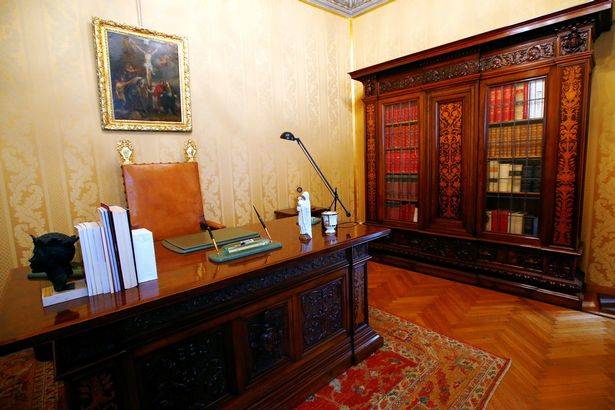Papal Apartments at Castel Gandolfo Open to the Public
The Apostolic Palace of Castel Gandolfo, located 15 miles southeast of Rome overlooking Lake Albano and the surrounding hills, has historically served as the summer residence and vacation retreat for the leader of the Catholic Church since the 17th century. However, Pope Francis once again bucked tradition and opened the formerly private papal apartments to the public on October 22 as part of a museum.
Over the years Pope Francis has increasingly made the Pontifical Villas of Castel Gandolfo accessible to visitors. In 2014, he made the Barberini Gardens available to tourists, who are able to sightsee the grounds on a white train. A year later, he opened a portion of the Apostolic Palace as a portrait gallery. His recent decision to relinquish his use of the residence, preferring to spend his summers at the Vatican, offers a larger look into the past 400 years.
According to Antonio Paolucci, director of the Vatican, Pope Francis “wanted this place—so rich in history and so significant—to be a gift for the people.”
While the entire estate is now open as a museum, the main draw is the pope’s reserved quarters, including his bedroom adorned with beige walls and light green curtains, conveying an air of elegance without being ostentatious. Of course, there is also his private study, chapel, and library, which all evoke interest and a sense of imposition. Boasting lakeside views, the Swiss Hall and the Throne Room are just a couple more of the 20 never-before-seen rooms.
The transformation of the residence used by popes down the centuries into a museum is indicative of the Pope’s frugality and forward thinking. In fact, it is in line with his decision at the very start of his pontificate to abide in the humbler Domus Santa Marta, a glorified Vatican bed and breakfast, rather than the Vatican’s apostolic palace overlooking St. Peter's square.
However, his latest decision can be reversed if future popes choose to do so.
The History
The Vatican has owned the estate since 1596. From then, 15 of 33 pontiffs have summered there, beginning with Urban VIII in the 1600s.
Pius XII went as far as opening the palace to area residents fleeing battles during World War II. In 1944, at least 12,000 people, including Jews and Italian resistance fighters, took refugee there. His bedroom even served as a makeshift delivery room for about 40 children, many who were named after the Pope’s real name, Eugenio.
After the war, Pius resumed spending his summers there and died in the same bedroom in 1958. Pope Paul VI also died there in 1978, and Pope John Paul II recovered from an assassination attempt in the same room. However, John Paul II made the most of his time at the residence, spending over 5 years of his 16-year papacy at the estate, even building a swimming pool for his leisure.









































i-Italy
Facebook
Google+
This work may not be reproduced, in whole or in part, without prior written permission.
Questo lavoro non può essere riprodotto, in tutto o in parte, senza permesso scritto.